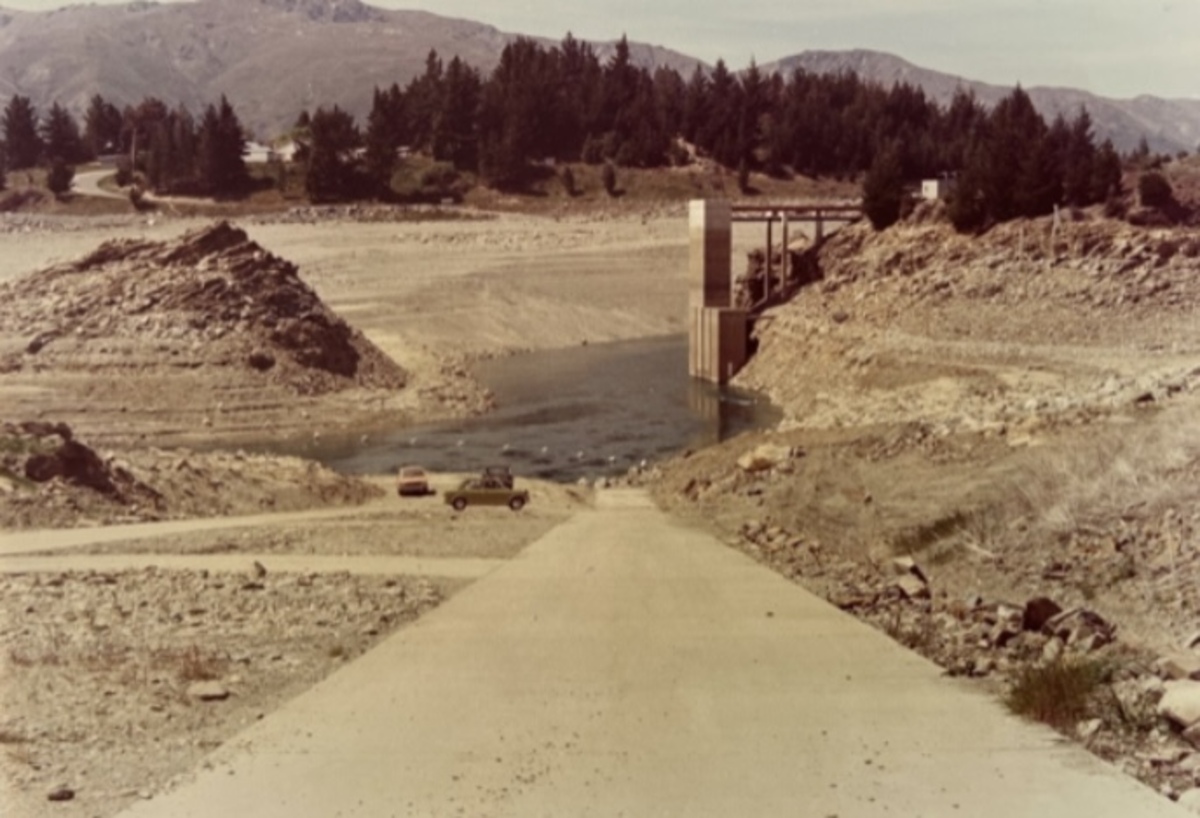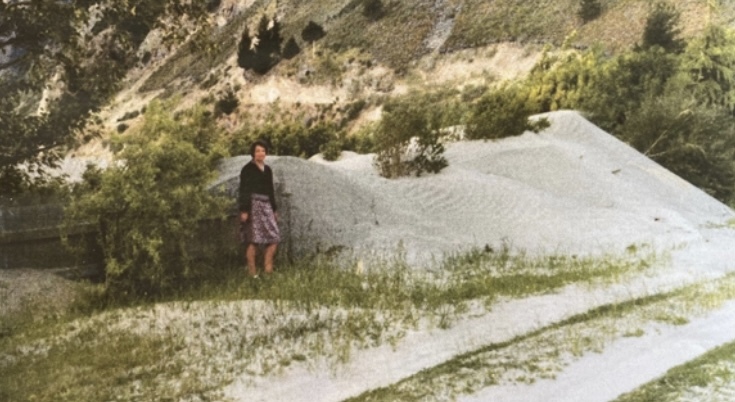Concern about ‘dramatic’ proposal to lower Lake Hāwea level
Maddy Harker
09 June 2025, 5:06 PM
 The Lake Hāwea boat ramp and outlet in 1978, at 327 metres above sea level. PHOTO: Taylor collection
The Lake Hāwea boat ramp and outlet in 1978, at 327 metres above sea level. PHOTO: Taylor collectionContact Energy says plans to lower the permitted level of Lake Hāwea are in the “very early days” but community opposition to the proposal is growing quickly.
The Guardians of Lake Hāwea met with Contact Energy in May and were told the company intends to apply via the fast-track approvals process to lower the permitted lake level by up to six metres.
Contact Energy, which operates the Lake Hāwea hydro dam, currently holds resource consent to manage the lake level between a low of 338 metres above sea level (masl) and a high of 346masl, with a contingency of another two metres lower if Transpower considers there is a major threat to security of electricity supply (described as contingent storage).
Guardians of Lake Hāwea chair Geoff Kernick said Contact Energy told the group it aims to reduce the normal range to as low as 336masl and the contingency storage to 330masl.
“Our position is we don’t want any change to the normal operating range of the lake or to the availability of contingent storage,” Geoff told the Wānaka App.
A newsletter by the Guardians from last week said reducing the lake level could have devastating effects, including a loss of landscape values and recreational amenity, dust storms, impacts on bore water, and on the mortality of aquatic animal and plant life.
The long-running local group, which works to protect and improve Lake Hāwea’s water quality, biodiversity and ecosystems, has previously opposed use of the contingency on these grounds, Geoff said.

Wind-borne lake sediment at John Creek circa 1978-80 following lowering of Lake Hāwea’s level in 1976. PHOTO: Campbell collection
“If in the past we’ve voiced concern about accessing the extra two metres as contingent storage then why on earth would we be happy about accessing those two metres under normal operating conditions?”
Since meeting with Contact Energy, the Guardians have looked more closely at the potential impacts of lowering the lake level.
Geoff said a report commissioned by Otago Regional Council (ORC) indicated that a reduction in the lake level could also have “some severe effects on the Hāwea aquifer, for irrigation and for community drinking water”.
He said he was not convinced by answers provided to the Wānaka App by Contact Energy in response to a request for comment on the Lake Hāwea level proposal.
The company said it was “exploring a number of options to support New Zealand’s energy security through renewable energy sources”.
“We are proposing to adjust lake levels in times of extreme need so we could generate more renewable electricity at our hydro dams and manage dry year risk, particularly when demand is high in the winter,” Contact Energy head of hydro generation Blair Croall told the Wānaka App
Geoff said the Guardians were told that Contact Energy aimed to reduce the normal operating range of Lake Hāwea as well as the contingency at times of high demand.
He was also wary of the company’s claims of being in the “very early days”, given the Guardians were told the company planned to take the first step in the fast-track approval process (which is designed to ‘streamline projects that deliver significant national or regional benefits’) this month.
Geoff said he hadn’t had clarity from Contact Energy on community consultation on the proposal, and the company did not respond directly to a question from the Wānaka App about consultation, saying only that consultation was important.
News of the lake level proposal is spreading fast and Wānaka Upper Clutha Community Board (WUCCB) chair Simon Telfer said the board spoke “at length” with residents - including the Guardians - during a ‘Share with Us’ community session on Wednesday (June 4).
“There is growing concern in the community about the possibility of a dramatic lowering of lake levels,” he said.
“This matter is moving at pace and the board has already contacted staff to understand Queenstown Lakes District Council's [QLDC] position and conviction to support the community in its concerns.
Geoff said the Guardians plan to speak to ORC and QLDC at their next meetings to encourage them to take a stand.
They also hope to build awareness of Contact Energy’s plans within the wider community.







